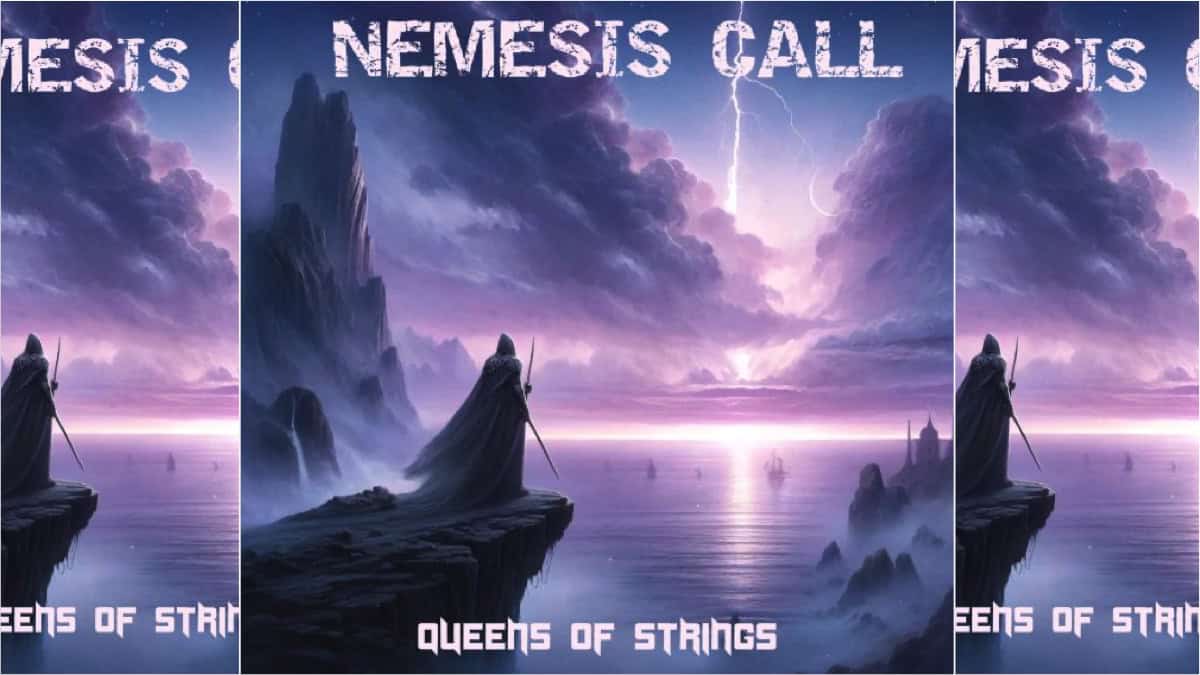Latest
Worship Bassist’s Toolkit – Transcription by Steven Gregory

 Welcome to the next article in my “Worship Bassist’s Toolkit” series. In this series, we are thinking about tools that worship bassists must have available, maintained, and ready to use in order to create passionate, musical worship. Rather than the physical tools that are required for our craft, we have investigated musical tools such as fretboard knowledge and technique awareness. In this article, we will examine another musical tool: transcription.
Welcome to the next article in my “Worship Bassist’s Toolkit” series. In this series, we are thinking about tools that worship bassists must have available, maintained, and ready to use in order to create passionate, musical worship. Rather than the physical tools that are required for our craft, we have investigated musical tools such as fretboard knowledge and technique awareness. In this article, we will examine another musical tool: transcription.
Transcription, which is listening to music and translating it into a written form, is a skill that is critical for all musicians to practice. Those who transcribe regularly experience amazing increase in their musical abilities and understanding. In truth, more than one article is required to thoroughly investigate the art of transcription and I will most certainly dedicate future articles to this topic. However, transcription of music is definitely a tool that worship bassists must have in their toolkit, so this article will give an overview of transcription and look at the practical application of transcription for worship bassists.
Transcription has become a vital tool for the worship bassist due to the regular practice of worship teams using recordings, rather than sheet music, to learn songs. As worship team members, our job is to learn the songs from the recordings and be ready to play them in performance by the next Sunday. One approach to this task is to learn the songs by ear, without transferring the information to paper. This is certainly a valid way to learn tunes and can be, in certain situations, the right choice. If our charge is to bring our best to worship and provide a depth of understanding to the songs, transcription is the better option. Transcription allows the worship bassist to analyze song structure, chord progressions, dynamic changes, and other important elements in addition to the bass line. The act of translating from an aural to visual format forces the music to be truly understood, rather than accepting a superficial grasp of a song.
If never or rarely done, transcription can be a daunting task. As with many things, the best way to learn to transcribe is to do a lot of transcriptions! To help, break down transcription into smaller steps:
1. Listen. This is the obvious first step, but consider taking this step without having your instrument in hand and paper and pen at the ready. Just listen to the song, without distraction. Use a quality system for this – whether you use headphones or speakers is completely up to you. If you have taken the crazy step of actually giving yourself a few days to transcribe your music, listening with different systems can help. I often do my main transcription work at home with headphones, but listen to the songs when I am driving in my car as well. For larger transcription projects, I have often been surprised at what I notice distinctly in the car that was less noticeable at home. Take your time and listen to the song.
2. Learn. Start the learning process still away from pen and paper – try to separate the bass line in your mind and hear the rhythm and harmony that you will be playing. Also mentally take note of the basic song structure. If there are certain parts of the line and/or song that are noteworthy, listen to them carefully and take notice that this part will need extra attention later.
3. Write. Depending on your situation, you may need to translate the recording into a chord chart with notes about the bass line, a note-for-note transcription of the bass line, or a hybrid of the two. For basic tunes, I often do a chord transcription along with bass line elements. When approaching a more difficult section or song, I prefer to do a strict note-for-note transcription. Even when doing a basic chord transcription, use staff paper so that you can translate the music across the measures appropriately. In any transcription, mark song sections, use repeats and endings, and notate as much as possible.
During this stage, you often will need to incorporate the use of your instrument to determine the harmony and bass line elements you are transcribing. When you do use your instrument, make sure that you are careful to not play over parts in a way that blocks you from hearing the actual recorded bass line. Using your ears to determine what is being played on the recording is key here, not focusing on your playing.
4. Edit. Once you’ve been through the transcription, go back and listen with a critical ear. Make sure your notation is correct and you have accurately transcribed the song. This is also an excellent opportunity to mark dynamics and make notes on the page to alert you to tricky spots. Any extra performance notes should be added at this time.
5. Play. Play along with your transcription, correct any mistakes, and add final notes. This is also the stage where you can learn the bass-specific technical intricacies necessary to play the part you have just transcribed.
When you have completed this process you have trained your ears, learned a song, and brought forth performance elements that should be considered in rehearsal. In addition, your chart will save a lot of time the next time the song shows up on the set list. Rather than learning the music superficially and forgetting the song immediately after performance, you have obtained a wealth of knowledge about the song and have given yourself a platform from which you can bring your very best to worship.
Transcription is an essential tool for worship bassists to have available, maintained, and ready to use. As I mentioned above, this article is only the start of a discussion on transcription. I would love to hear about your experiences with transcription – leave a comment below!
Until next time, I hope that your bass playing is blessed and that you can bless others through your bass playing!
Gear News
New Gear: Spector Doug Wimbish USA Custom Series Basses

Spector offers Doug Wimbish USA Custom Series basses…
Spector, a leading authority in bass guitar design, unveils two new Doug Wimbish USA Custom Series basses. Synonymous with bass excellence since 1987, Wimbish collaborated with Spector’s USA Custom Shop to create the DW-4 and DW-5 models, echoing the iconic instruments that have been favored heavily throughout his recording and performing career.
These signature basses faithfully replicate Wimbish’s originals, down to the smallest details like neck contours and nut widths. Customized EMG pickups, developed in collaboration with Wimbish, capture the distinctive sound that has shaped his monumental musical impact. These models invite players to explore the feel and response that have defined Wimbish’s signature style over the years.
Available in 4-string and 5-string versions, each model boasts unique features & finish options. The DW-4 comes in Amber Stain Gloss and Black Stain Gloss options, while the DW-5 offers Dark Blue Stain Gloss and Faded Natural Gloss. Every purchase includes a certificate of authenticity signed by Doug Wimbish. Wimbish comments, “Spector took the time to get every little nuance right, and that to me is dedication and being thoughtful enough to know ‘I want to nail it,’ and they did. I’m able to pick these instruments up for the first time and play them like I’ve already had them for years.”
For more information, visit spectorbass.com/doug-wimbish-usa-signature-series/.
Photo: Doug Wimbish, pictured with the new Spector Doug Wimbish USA Custom Series basses
Bass CDs
New Campaign: Alberto Rigoni, Nemesis Call – Queens Of Strings

Italian bass master and composer ALBERTO RIGONI is thrilled to announce his brand new project “Nemesis Call – Queens Of Strings”.
Nemesis Call – Queens Of Strings features a super talented drummer from Japan (TBA) and tons of female guitarists such as SAKI, Giusy Busetto, Alexandra Zerner (TBC) and many many others (TBA). Furthermore, Alberto has also launched a Fundraising Campaign for the project. 20% of the income will be donated to Lega del Filo d’Oro legadelfilodoro.it/it, an Italian association that helps deaf and blind children!
Alberto shares:
“Hello friends and music lovers! I’m Alberto Rigoni, an Italian composer and.. a BASS GUY! Between 2008 and 2024 I released 13 solo albums, spanning from progressive, rock, ambient to funky and experimental music, which also features contributions from musicians such as keyboard wizard Jordan Rudess (Dream Theater) drummer Gavin Harrison (Porcupine Tree) and Marco Minnemann (the Aristocrats), keyboardist Kevin Moore (ex Dream Theater), singer John Jeff Soto (ex Goran Edman (ex Y. Malmsteen), bassists Nathan East, Stu Hamm (Joe Satriani), Nik West (ex Prince) and many others. I’m also bass player for BAD As, Sunset Groove Society, Kim Bingham, The Italians bands and co-producer of Mistheria’s Vivaldi Metal Project.”
Alberto on the new project Nemesis Call:
“Even if my latest album “Unexpected Lullabies”, dedicated to my newborn Vittoria Parini Rigoni, will be released on June 4th, 2024, when Vittoria came to life I felt the need to compose new music (yes, I really can’t stop!!!!!). This time will be quite challenging because I’m willing to release an instrumental ambient/prog/rock/metal album, that will feature a talented and young drummer (TBA) and tons of female guitarists (that’s why I will call the album “Queens of the Strings”) such as Alexandra Zerner, YOKA and many others (TBA/TBC)). It won’t be easy to manage all such great musicians but I will make it!! Are you ready to face a new prog experience? The album will be released in Digipack CD and in high-quality digital format approximately at the beginning of 2025.”
The Fundraising Campaign:
As an independent artist, Alberto is looking for supporters who can help him reach the budget for the production (recordings, mix, mastering, artwork etc.) of this new album and has started this fundraising campaign that will end successfully on October 15th, 2024.
Get further information about Alberto Rigoni’s new project Nemesis Call Fundraising campaign at albertorigoni.net/nemesiscal
Bass Videos
Artist Update With Bassist Derek Frank

Bassist Derek Frank…
Many of you will remember the last time I chatted with Derek Frank was back in 2017. The main thing that impressed me was how busy Derek was and how he juggled playing with many huge acts.
Now, I am happy to hear that Derek launched a new album last March titled “Origin Story” where he digs deep into his roots and pays homage to Pittsburg.
Join me as we get caught up after all these years and hear the details about the new album, how Derek gets his sound, and his plans for the future.
Photo, Stephen Bradley
Featured Videos:
Visit Online:
www.derekfrank.com
www.instagram.com/derekfrankbass
www.youtube.com/derekfrankbass
www.facebook.com/derekfrankbass
Latest
This Week’s Top 10 Basses on Instagram

Check out our top 10 favorite basses on Instagram this week…
Click to follow Bass Musician on Instagram @bassmusicianmag
FEATURED @foderaguitars @bqwbassguitar @lecomptebass @xvector_basses @vuorensaku_guitars @phdbassguitars @meridian_guitars @sterlingbymusicman @ramabass.ok @overwaterbasses
Gear News
New Gear: Alberto Rigoni Signature Bass, the VPR5 by Gaetano Costanzo!

Alberto Rigoni Signature Bass, the VPR5 by Gaetano Costanzo!
Internationally renowned bassist ALBERTO RIGONI (soloist, BAD AS, Vivaldi Metal Project, TwinSpirits, etc.) is proud to announce the release of his signature bass VPR5 made by renowned Italian luthier Gaetano Costanzo!
The bass is entirely handmade in Italy, without the use of CNC or other machinery, and has rather special features. The VPR is a 5-string bass (but also available as a 4-string) with 30 frets, Seymour Duncan pickups, Music Man Alnico style, passive electronics (volume, tone and a switch to select series/parallel/single-coil mode), alder body, and American maple neck and fingerboard. Gotoh tuners that ensure perfect intonation. The bass is totally painted white (nitro finish) but other colors can be requested. The VPR has a weight of about 2.9 kg and suitable for any genre.
For more information contact Gaetanobass77@gmail.com or visit online at www.instagram.com/gaetanocostanzoluthier or www.facebook.com/GaetanoCostanzoLuthier



















